
by Sebastián J. Bianchi
The Tank Combat Badge, or Panzer Badge, had had first existed in the German Army during World War I, and was latter issued again after the Spanish Civil War.
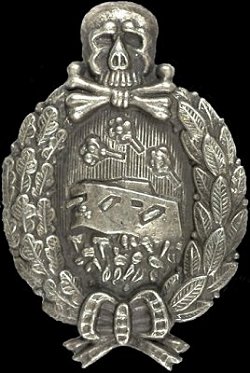 |
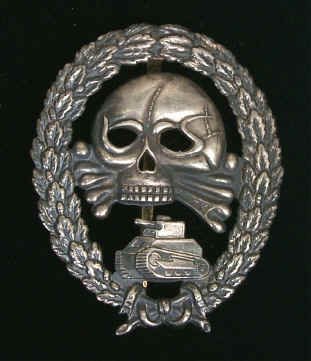 |
|
World War I Badge |
Spanish Civil War Panzer Badge |
The Wehrmacht Tank Battle badge was introduced on December 20, 1939, in order to recognize the achievements of Panzer personnel who took part in armored assaults. It was designed by Ernst Peekhaus of Berlin, and was instituted by order of Generaloberst von Brauchitsh. On June 6th, 1940, a separate class of the badge, in Bronze, was added in order to recognize the crews of armored vehicles other than tanks (half tracks, assault guns, etc).
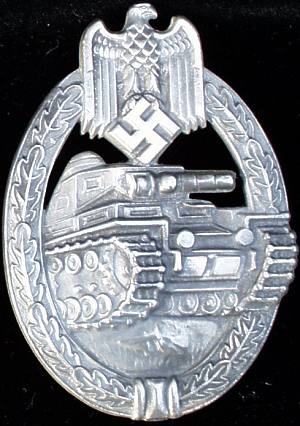
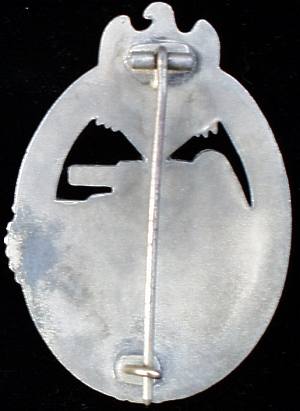
Panzer Badge in Silver
S. Bianchi Collection
Manufacturing and Technical Information
The panzer badge consists of an oval with a wreath composed of five single oak leaves on one side and four on the other (the tank threads covers one).At the base of the oval is a tie, and on top is the Wehrmacht eagle, which has downspread wings and is clutching a swastika in its talons. In the center of the badge is a tank that passes from left to right (viewers perspective). As mentioned above, the left track of the tank goes into the wreath of oak leaves, and the area under the tank is grooved and made to look like grass.
The reverse of the badge has three variations, the badge could either be hollow backed, flat, or semi-dished. The hollowed backed variation showed the imprint of the obverse, while the flat was just solid (pictured here). The semi-dished version has a slight indent that shows part of the outline of the tank. The badge was attached to the uniform via a hitch and hook, which were affixed to the reverse and had a couple variations.There was the conventional soldering of a small rectangular medal bar (pictured here), as well as the more rare type in which a circular ball hinge was inserted into the body of the badge.
The badge was constructed with great detail throughout, but while the early types were silver/bronze plated the later versions had only a silver wash over zinc, and therefore the finish tends to fade.
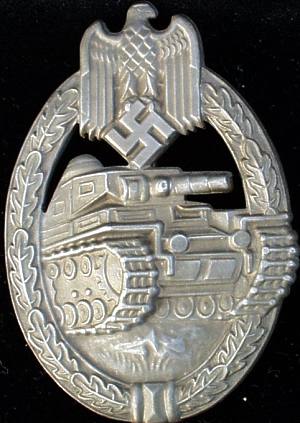
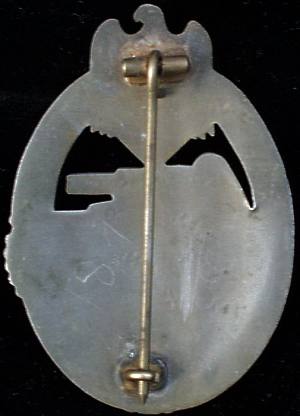
Panzer Badge in Bronze
S. Bianchi Collection
Presentation, Wear, Documents
The badge was presented in a paper packet with the name of the award printed on the outside, but it was not uncommon to have the presenting officer pin the award right on the tunic of the recipient. The award document that was awarded with it was the common type that had the particulars of the recipient (rank, name) and the authorizing signature of an officer. As with most War Badges, the Panzer Badge was worn on the left pocket tunic.
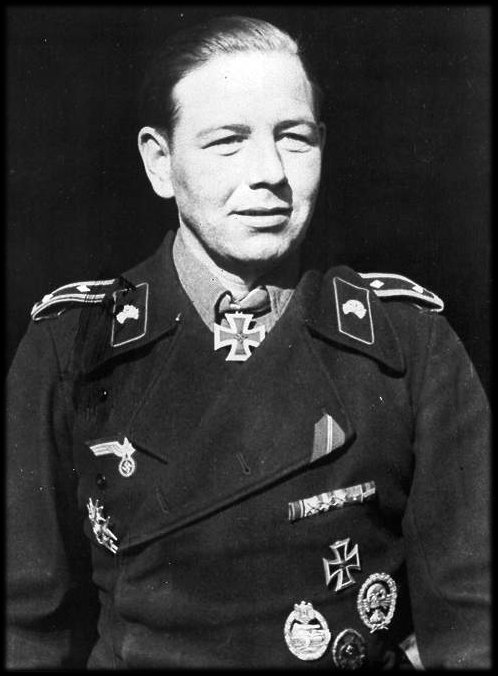
Award Criteria
The award criteria was as follows,
- To have taken part in three armored assaults in three different days.
- To have been wounded in the course of an assault.
- To have earned a bravery decoration in the course of an assault.
As mentioned above, the Silver class was presented to tank commanders, gunners or radio operators while the bronze class was presented to the Panzer-Grenadier regiments, tank assault crew, armored recon units, and medical personnel who went into battle in armored vehicles. The award was authorized through the Panzer Division commander.
Tank Badge 25, 50, 75, 100
As the war continued it became apparent that the single Panzer Badge was no longer adequate to recognize the growing number of veterans with years of experience, and in June of 1943 four new classes of the award were introduced for 25, 50, 75 and 100 engagements. These new badges consisted of an award that was similar to the unnumbered Panzer Badge, but with a box showing the Arabic number of the class at the base of the wreath. The badge was slightly larger for the 25 and 50 type with the 75 and 100 being larger still. The wreath in the case of the 25 and 50 was silvered, while in the 75 and 100 class it was gilt. The center of the badge (the tank) was made of a separate striking and chemically darkened in the case of the 25 and 50 class, while in the 75 and 100 class the tank was silvered. The reverse has several variations, and could either have a slim or wide pin.The numbered Panzer Badges were all made with exceptional quality, and were highly respected among the troops.
![]()
© Copyright Wehrmacht-Awards.com LLC |






